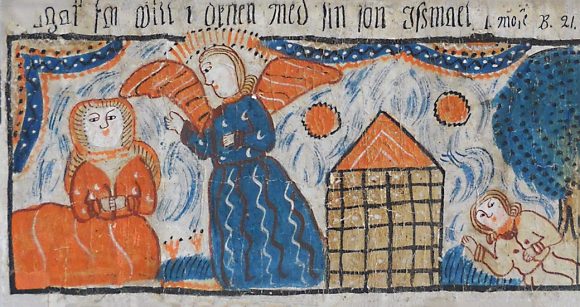+1 413-229-3070 | 800-290-5762 | edithgilson@cupboardsandroses.com
Swedish Folk Art

Want to know more about Mangle Boards?
Read our brief history.
A Word about Swedish “Bonads”

We just love these things! A Swedish “bonad,” or wall hanging, is a window right into the nineteenth century life of the Swedish farmer and his family.
Imagine living on a farm in the Swedish countryside. Your windows openings are small to keep out the cold during the long winter, and the low sun peers in for just eight hours a day. Your walls are natural wood or, if they have been whitewashed, they are darkened by the smoke from the hearth where a fire burns all winter. You and your family work, play, eat and sleep in the same room during the cold months.
How your heart would ache for a bit of color and a taste of beauty!
That’s when you would carefully unroll the paintings you store away for special occasions – the paintings we know as Swedish bonads.
The bonads at Cupboards & Roses Swedish Antiques are from the Småland area of Sweden and date from about 1750 to the middle of the nineteenth century. They might be considered the “poor man’s tapestry.”
Most bonads from this period depicted scenes of farm and village life or stories from the bible. Part of the charm of these pieces of folk art is that the biblical figures are depicted wearing the fashions of the Swedish court.
The local or travelling artists who created these paintings worked to order. Often images were chosen to mark a family milestone: the Wedding at Cana or Wise and Foolish Virgins for a marriage or the the Nativity for the birth of a first child, for example.
In the drab and routine life of a country family, these paintings were highly prized possessions. During holiday visits and at weddings celebrations and other ceremonies they would be proudly displayed.
Today, these folk art pieces are rarely seen outside Swedish museums. In a few instances, research has identified the painter or the school responsible for certain bonads, but most of them come to us a anonymous gifts from the past. And we are most grateful.
Most published scholarly studies are in Swedish. We recommend Sydsvenska Bonadsmålningar, by Nils-Arvid Bringéus, Böcker on Konst, 1982. Also, please see http://www.ujh.se/historisk-bakgrund.html.